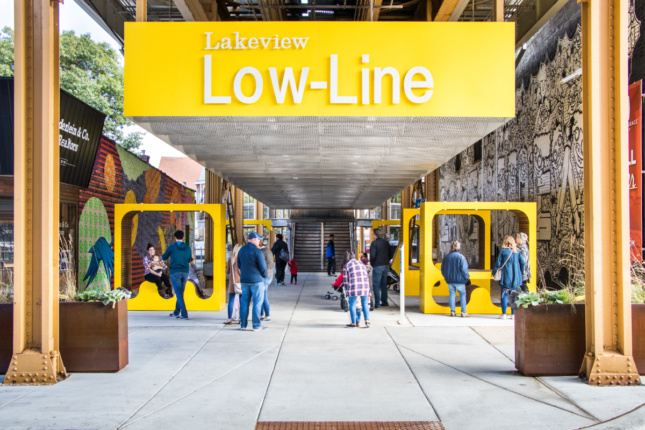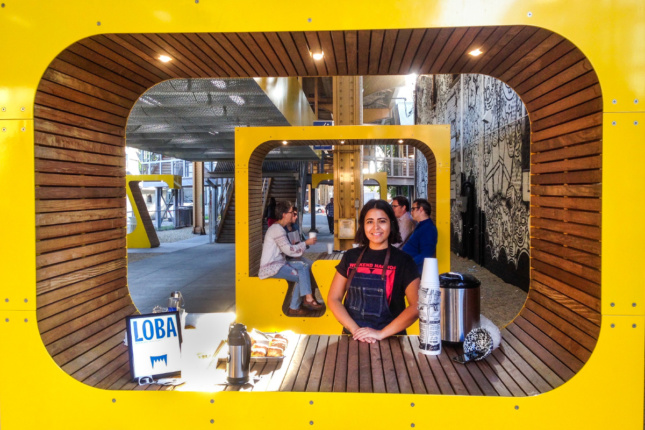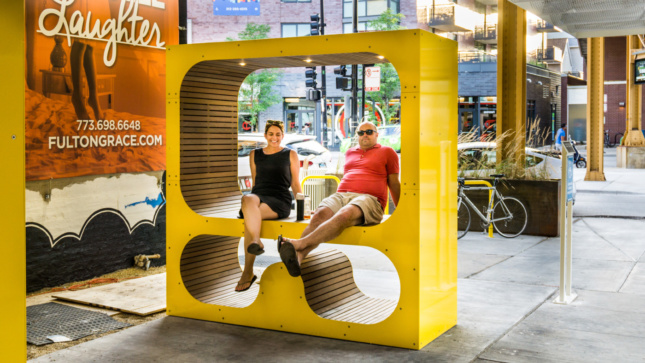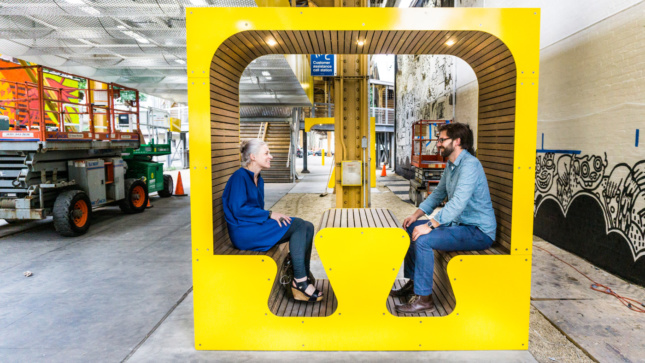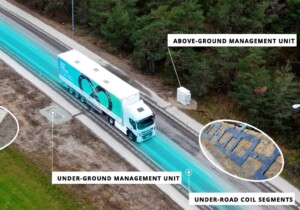Location: Chicago
Design consultants: PORT Urbanism
Decorative stone: Lake Street Supply
Crushed granite pathway: Kafka Granite
Planters: Planterworx
Custom cubbies: Landscape Forms
Light boxes: Landscape Forms
Fixtures and fittings: Studio 431

PORT Urbanism designed Chicago’s Lakeview Low-Line to be a community art space. When the Lakeview Chamber of Commerce drafted its master plan in 2012, among its top priorities was developing the underutilized right-of-way and Chicago Transit Authority maintenance path along the city’s “L” tracks between the Southport and Paulina stations on the Brown Line. Working with the manufacturer Landscape Forms’ Studio 431, PORT created a series of bright yellow rectangular boxes, or “cubbies,” as a new take on public furnishing.
The carved-out forms of the Low-Line’s cubbies take cues from the interiors of the “L” train cars and the shape of the tracks overhead. The transit system had more than just an aesthetic influence; the cubbies needed to be movable for track repair and the possibility of excavation to rebuild the train structure’s column footings. The custom furniture rethinks durability, access, and comfort while accommodating a range of programs.
The Low-Line was designed to create a lively place for commuters, residents, and tourists to enjoy public art. It includes a picnic table, a vendor booth-cum-bar, and two cantilevered cubbies that frame the entry made of powder-coated steel exteriors and slatted ipe wood interiors. Power is integrated into the cubbies for controlled access by vendors and musicians. Studio 431 also manufactured easily replaceable panels and tamper-resistant fasteners to account for wear and tear. The first phase of the half-mile-long art walk and garden opened to the public in 2018 as a celebration of the neighborhood’s culture and is part of a larger project that aims to encourage use of the L and other mass transit lines as a sustainable alternative to driving.






